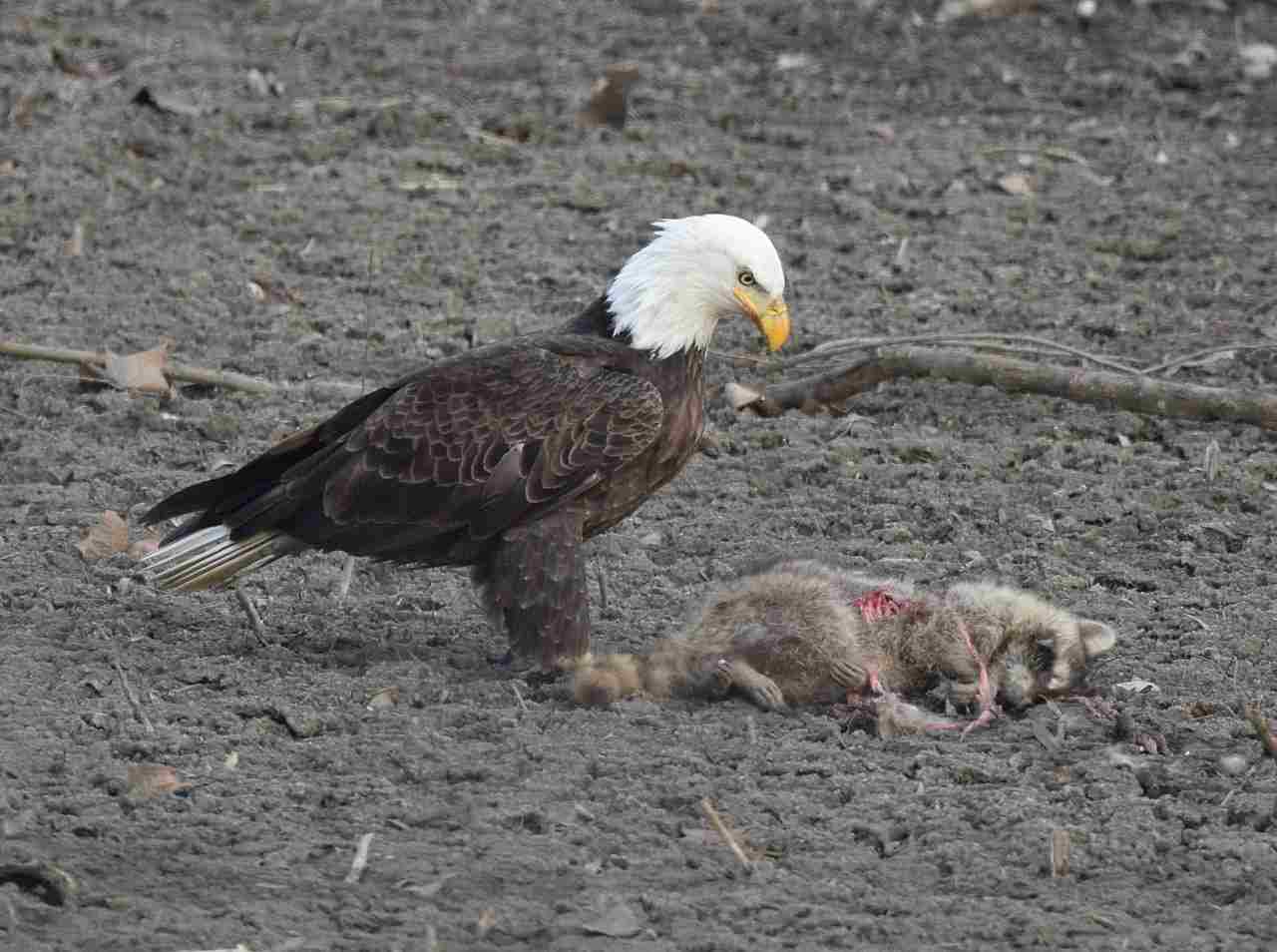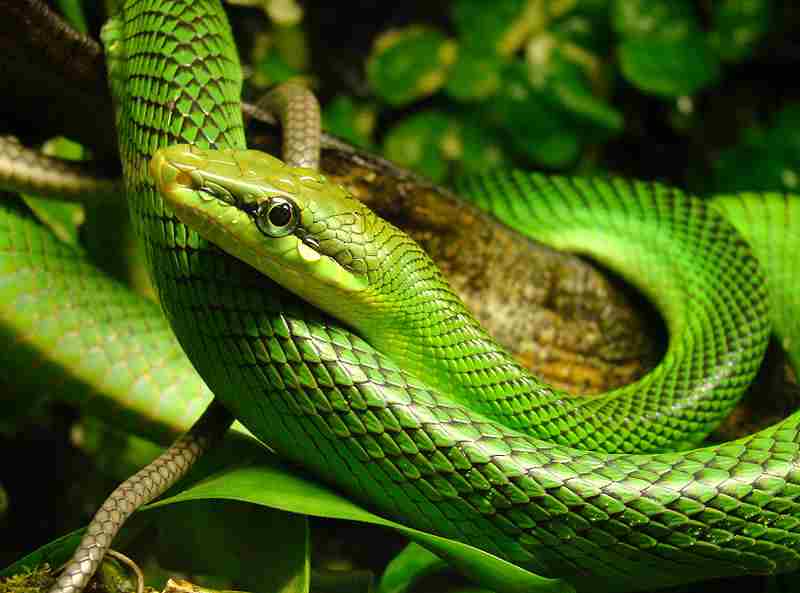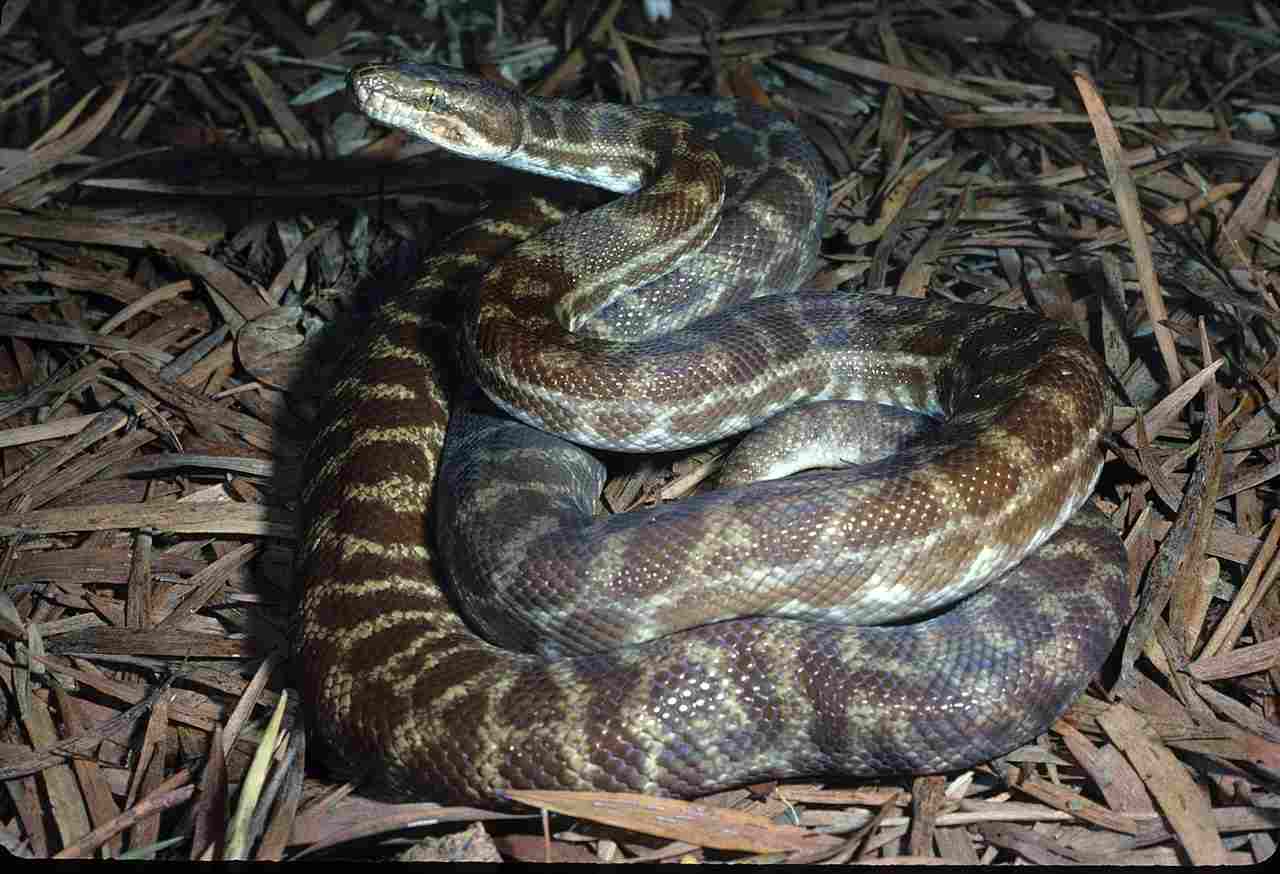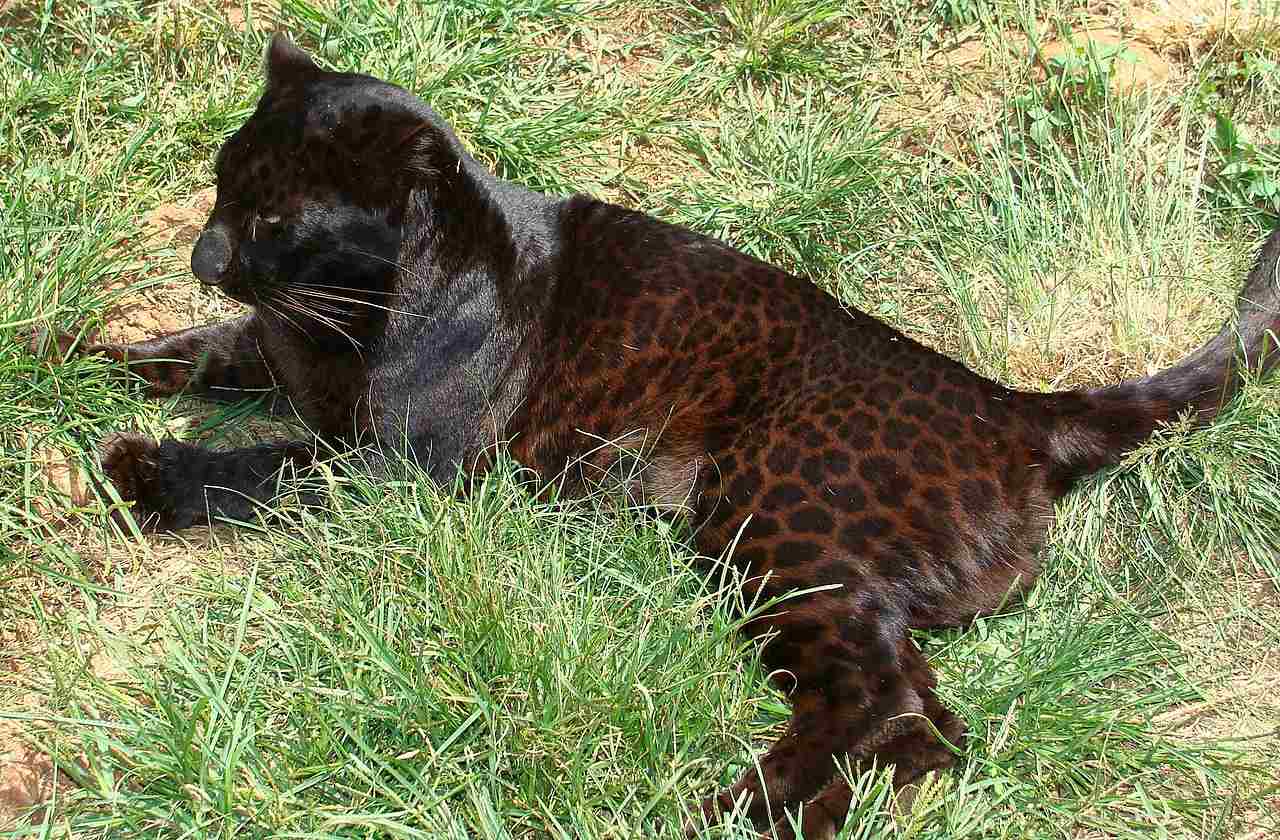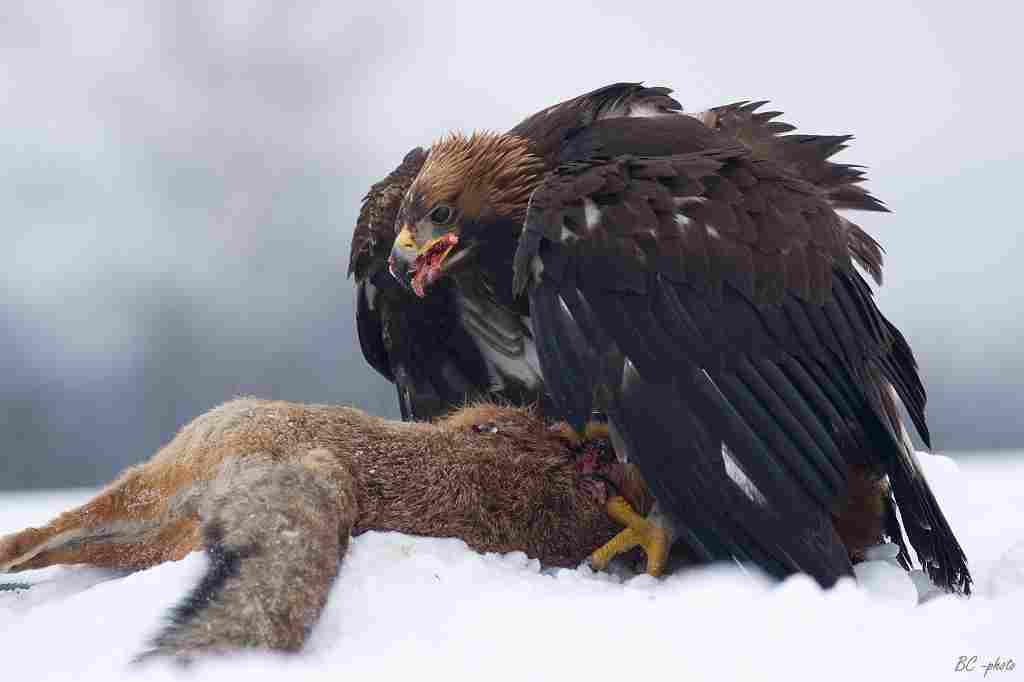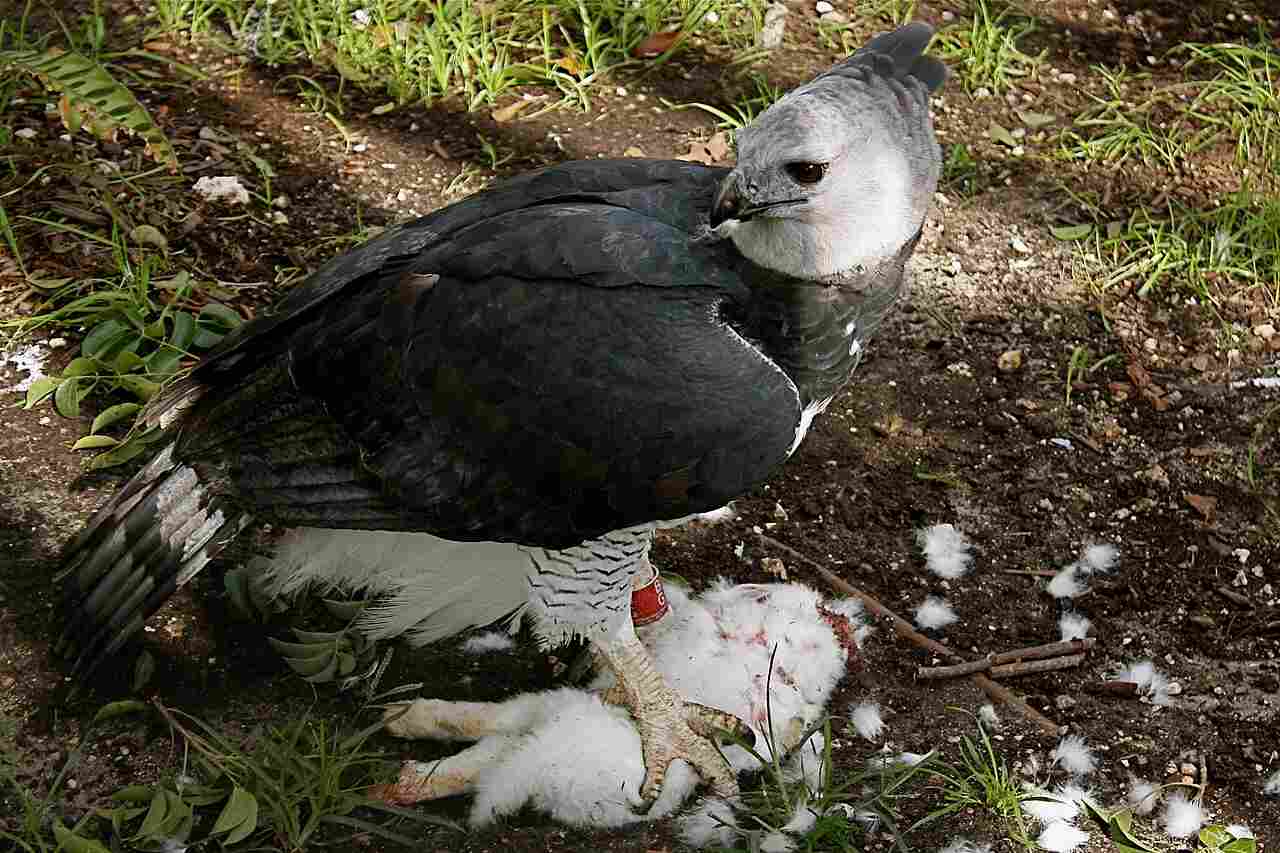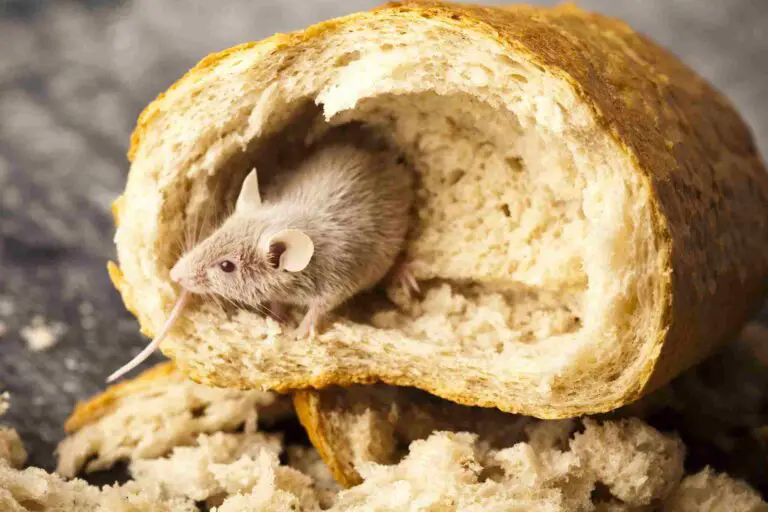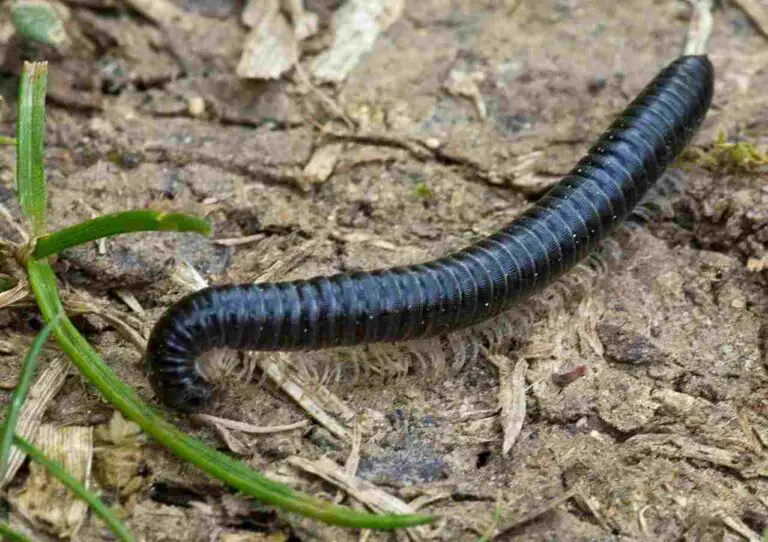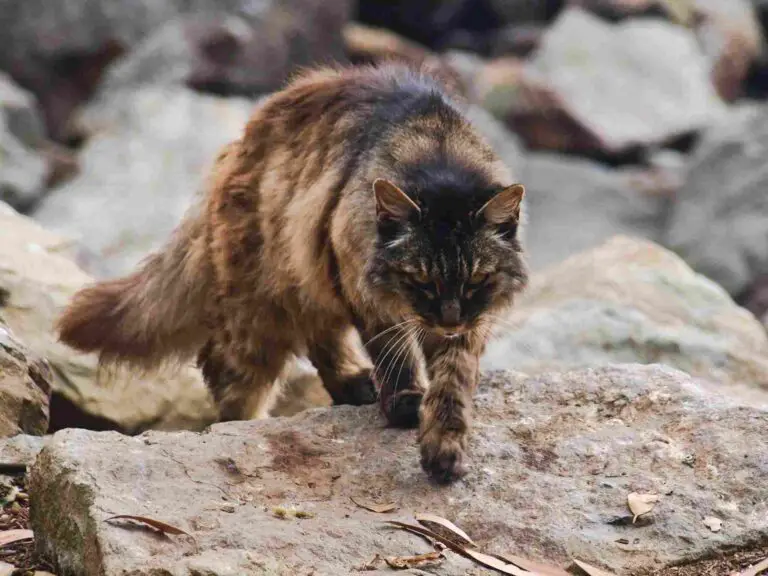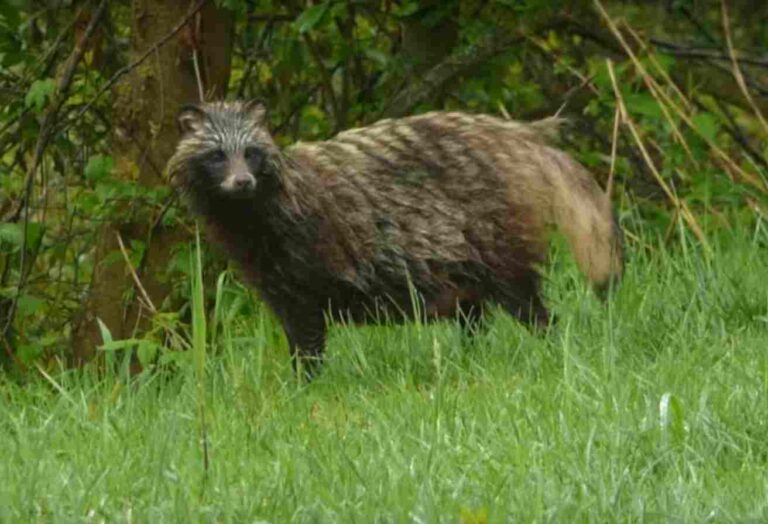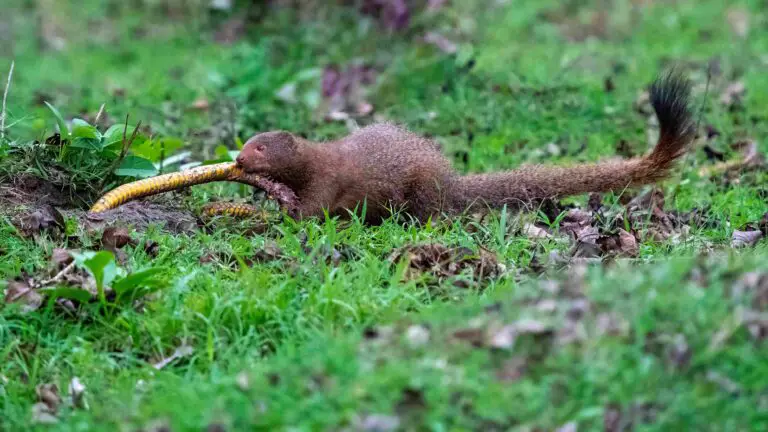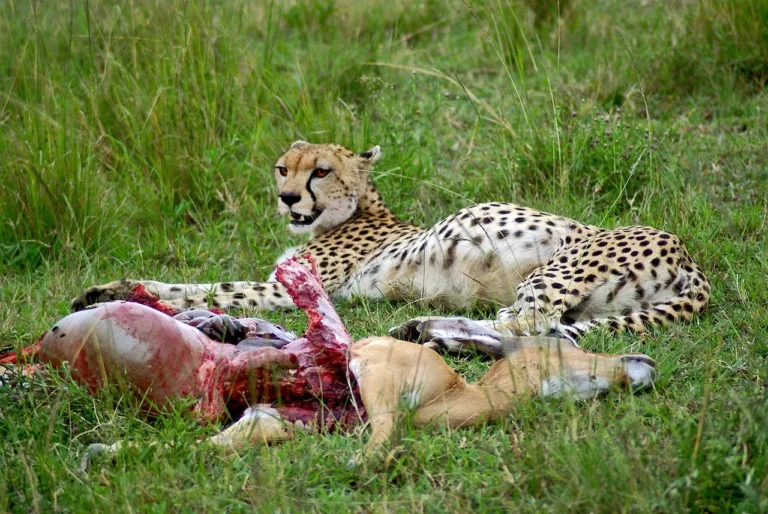What Eats A Jaguar In the Rainforest? 6 Predators of the Jaguar Revealed
Animal that eat jaguars in the rainforest include crocodilians like black caimans, large snakes like anacondas, emerald tree boas, harpy eagles, as well as decomposers that feed on their remains after death. Humans are a major predator of jaguars, although they do not permanently inhabit the forest like other animals.
It must be noted that jaguars are apex predators in the rainforest and do not have any natural predators above them in the food chain. They may only fall prey to other predates under anomalous circumstances, such as food scarcity, and intense competition for territory or prey.
What Animals Eat Jaguars?
Animals that eat jaguars range from humans and black caimans to anacondas, tree boas, and decomposers.
1). Humans
Humans are the ultimate apex predators in the ecosystem and can prey on jaguars. With our superior intelligence and tools, we have the ability to hunt and consume these majestic creatures. However, it is important to note that humans hunting jaguars is not a common occurrence and is often illegal due to conservation efforts.
In certain regions, indigenous communities have traditionally hunted jaguars for their fur, bones, and other body parts. These communities have a deep cultural connection to the jaguar and their hunting practices are often sustainable and respectful of the animal’s role in the ecosystem. However, commercial hunting and poaching of jaguars for their body parts or as trophies have significantly contributed to the decline in their population.
Human activities such as deforestation and habitat destruction also pose a significant threat to jaguars. As we encroach upon their natural habitats, jaguars are forced to adapt to new environments or face extinction. The loss of their natural prey due to human activities can also lead to increased conflicts between jaguars and humans, as they may turn to livestock as an alternative food source.
Conservation efforts are crucial in protecting jaguars from human threats. Organizations and governments are working together to establish protected areas and promote sustainable land use practices to ensure the survival of these magnificent creatures. Education and awareness campaigns are also important in fostering a sense of responsibility and respect towards jaguars and their habitats.
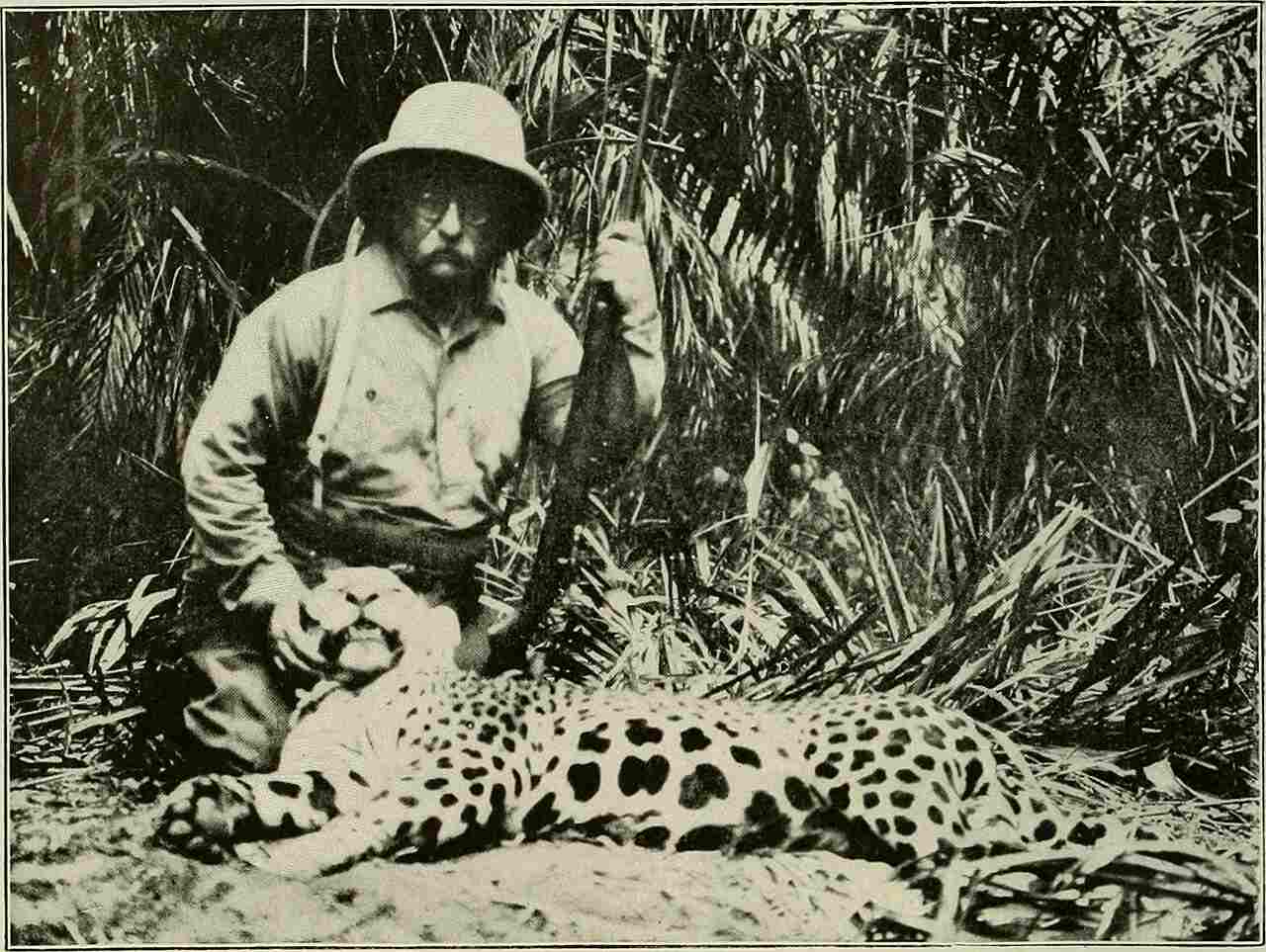
2). Crocodilians
Crocodilians, such as black caimans, are large members of the crocodilian population that can occasionally hunt and consume jaguars that venture into aquatic environments. However, it is important to note that these interactions are very rare. Jaguars are powerful predators and are not typically easy prey for crocodilians.
While crocodilians can pose a threat to jaguars, the tables can also turn. Smaller-sized caimans, in particular, can fall prey to jaguars. Jaguars are known to be opportunistic hunters and will take advantage of any available food source, including caimans.
The relationship between crocodilians and jaguars in terms of predation is complex and not well-documented. It is important to remember that these interactions occur in specific circumstances and are not a common occurrence in the rainforest ecosystem.
Crocodilians, like black caimans, are fascinating creatures that have adapted to life in the water. They are known for their powerful jaws and ability to ambush prey. While they may occasionally come into contact with jaguars, their primary diet consists of fish, birds, and smaller mammals.
3). Green Anacondas
Green anacondas are another reptile found in the rainforest and are known to be one of the larger snakes in this ecosystem. As constrictor snakes, they have the ability to kill a jaguar by constriction and feed on it, just like they would with other large mammals. However, it is important to note that this is not a common occurrence.
While green anacondas are capable of preying on jaguars, it can also happen the other way around. Jaguars are opportunistic hunters and will take advantage of any available food source, including anacondas. This dynamic between the two species showcases the complexity of predator-prey relationships in the rainforest.
Green anacondas are an example of animals that eat jaguars, although it is not a frequent event. It is important to understand that these interactions occur in specific circumstances and are not a regular part of the rainforest ecosystem.
4). Emerald Tree Boas
Emerald tree boas are another fascinating predator found in the rainforest. These large constrictor snakes have the ability to prey on jaguars, making them an example of animals that eat jaguars. Despite their size, emerald tree boas are agile climbers and can ambush their prey from the treetops.
With their vibrant green coloration, emerald tree boas blend seamlessly into the rainforest foliage, making them excellent ambush predators. They coil their bodies around their prey, constricting it until it suffocates. While they primarily feed on smaller mammals and birds, they have been known to take down larger prey, including jaguars.
The ability of emerald tree boas to prey on jaguars highlights the intricate web of predator-prey relationships in the rainforest. It is a constant battle for survival, where even the top predators can become prey. Jaguars, being opportunistic hunters, will not hesitate to take advantage of any available food source, including these powerful snakes.
However, it is important to note that predation of jaguars by emerald tree boas is not a common occurrence. It is a rare event that happens in specific circumstances. The jaguar’s strength and agility, combined with its ability to climb trees, make it a formidable opponent for the emerald tree boa.
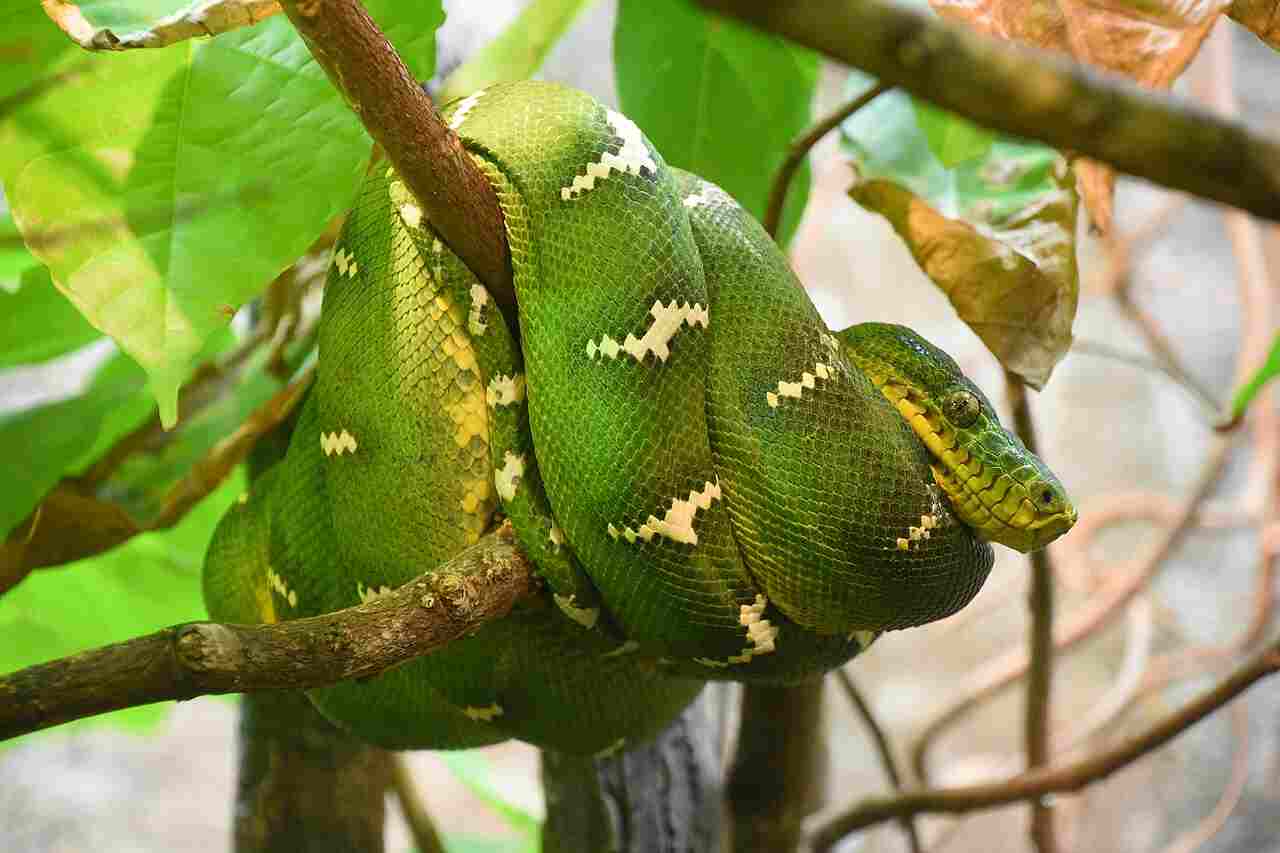
5). Harpy Eagles
Harpy eagles are a magnificent species of large rainforest raptors. While they are not usually predators of jaguars, they can pose a threat to unprotected cubs. This makes them an example of animals that eat jaguars in certain circumstances.
Harpy eagles are known for their impressive size and strength. With a wingspan of up to 7 feet and powerful talons, they are capable of taking down prey larger than themselves. Their sharp beaks and strong legs allow them to capture and kill their prey swiftly.
Although harpy eagles primarily feed on smaller mammals, birds, and reptiles, they have been observed preying on young or injured jaguars. Unprotected jaguar cubs are particularly vulnerable to these aerial predators. Harpy eagles can swoop down from the sky, using their agility and speed to surprise their prey.
The presence of harpy eagles in the rainforest ecosystem highlights the complex dynamics of predator-prey relationships. While jaguars are formidable hunters, they are not invincible. Harpy eagles serve as a reminder that even the top predators can face threats from unexpected sources.
It is important to note that harpy eagles do not typically target adult jaguars. Adult jaguars are powerful and agile, making them a challenging prey for the eagles. However, when it comes to vulnerable cubs, harpy eagles can become a significant threat.
6). Decomposers
Decomposers, like bacteria and fungi, play a crucial role in the rainforest ecosystem. While they may not be traditional predators of jaguars, they can be considered as animals that eat jaguars in a different way. Instead of hunting and consuming live prey, decomposers feed on the remains of dead animals, including jaguars.
Bacteria and fungi are responsible for breaking down organic matter, such as the carcasses of animals, into simpler compounds. They play a vital role in the process of decomposition, which is essential for nutrient recycling in the rainforest. When a jaguar dies, decomposers step in to consume and breakdown its remains, returning valuable nutrients back into the ecosystem.
The presence of decomposers highlights the interconnectedness of all organisms in the rainforest. While jaguars are powerful predators, they are not exempt from the natural cycle of life and death. Decomposers ensure that no part of the jaguar goes to waste, as they efficiently break down the carcass and recycle its nutrients back into the soil.
In this way, decomposers contribute to the overall health and balance of the rainforest ecosystem. They play a vital role in sustaining the diverse array of life that depends on the resources provided by the forest. Without decomposers, the rainforest would struggle to maintain its delicate equilibrium.
So, while decomposers may not actively hunt and consume live jaguars, they are still considered as animals that eat jaguars in a different sense. Their role in the process of decomposition is essential for the functioning of the rainforest, ensuring that even in death, jaguars continue to contribute to the vibrant web of life in the jungle.
Conclusion
* Humans, crocodilians, green anacondas, emerald tree boas, harpy eagles, and decomposers are all predators or animals that eat jaguars in different ways.
* Humans pose a threat to jaguars through habitat destruction, hunting, and illegal wildlife trade.
* Crocodilians, such as caimans and alligators, can prey on jaguars when they venture into the water.
* Green anacondas, the largest snakes in the world, have been known to attack and consume jaguars.
* Emerald tree boas are arboreal predators that can ambush and capture jaguars from the trees.
* Harpy eagles, with their powerful talons and strong beaks, are capable of hunting and killing jaguars.
* Decomposers, like bacteria and fungi, play a crucial role in the rainforest ecosystem by breaking down the remains of dead jaguars and recycling nutrients back into the soil.
FAQs
1. How Does a Jaguar Protect Itself
Jaguars have developed various strategies to protect themselves from potential threats in their rainforest habitat. These strategies include evasive behavior, territorial marking, roaring to deter other animals, and the use of their teeth and claws.
One way jaguars protect themselves is through evasive behavior. When they sense danger, they can quickly retreat into dense vegetation or climb trees to escape potential predators. Their agility and speed allow them to navigate through the rainforest with ease, making it difficult for other animals to catch them.
Another method of protection is territorial marking. Jaguars mark their territory by scratching trees and leaving scent markings. This serves as a warning to other animals that the area is already claimed and defended. By establishing their territory, jaguars reduce the likelihood of encountering other predators and minimize potential conflicts.
Jaguars are also known for their powerful roar, which can be heard from a considerable distance. This vocalization serves as a deterrent to other animals, signaling their presence and warning potential threats to stay away. The intimidating roar of a jaguar can often be enough to scare off smaller predators and prevent confrontations.
In addition to these behavioral defenses, jaguars possess physical adaptations that aid in their protection. Their strong jaws and sharp teeth allow them to deliver powerful bites, while their retractable claws provide them with a formidable weapon for defense and hunting.
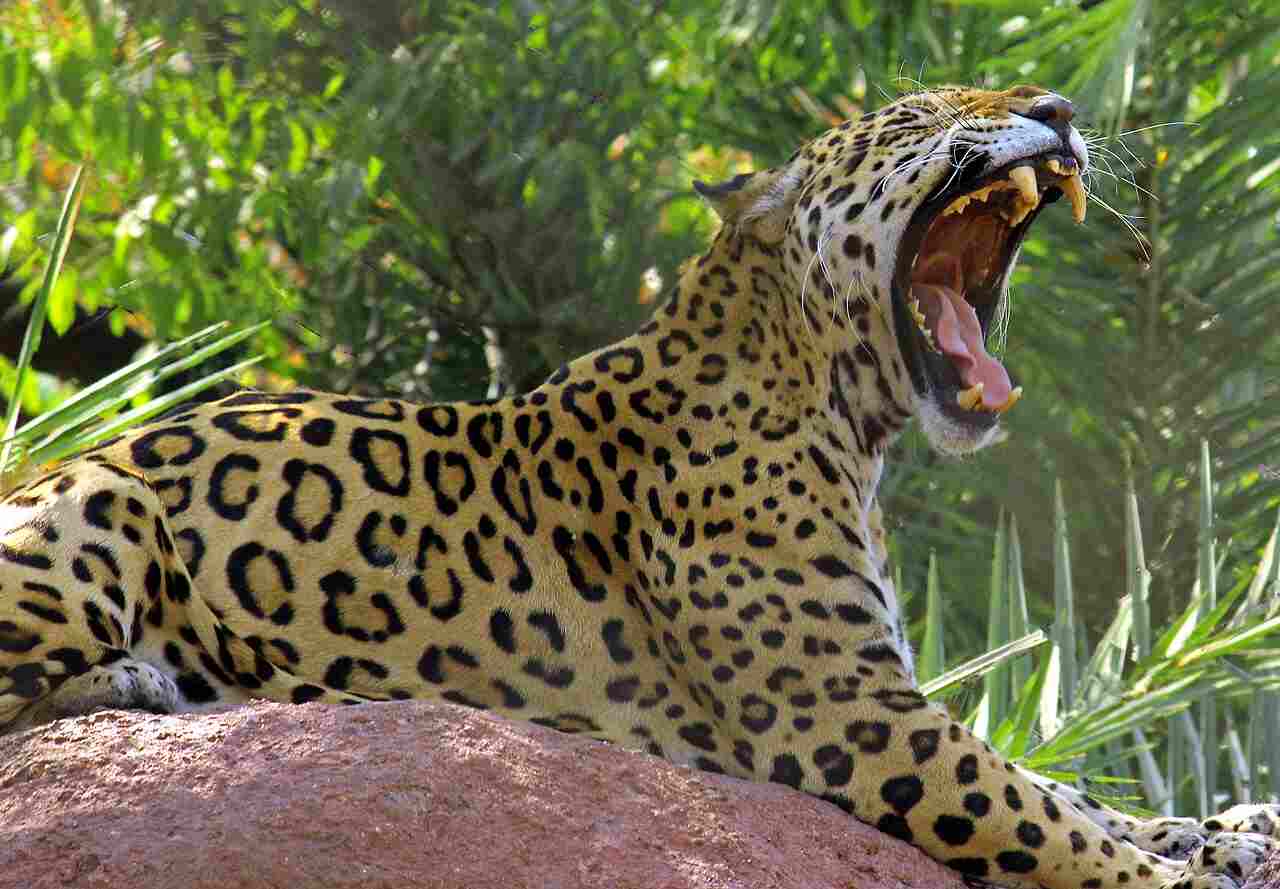
2. Do Anacondas Eat Jaguars?
While it is not common for anacondas to eat jaguars, they are capable of doing so. Anacondas are large constrictor snakes found in the rainforest, and their diet primarily consists of smaller prey such as fish, birds, and small mammals. However, in rare cases, anacondas have been known to attack and consume larger animals, including jaguars.
Anacondas have a powerful grip and can constrict their prey to suffocate them before swallowing them whole. Their size and strength make them formidable predators, capable of overpowering even large animals like jaguars. However, due to the jaguar’s agility, strength, and ability to climb trees, they are not an easy target for anacondas.
3. What Animal Can Eat a Jaguar?
In the rainforest, there are a few animals that have the ability to prey on jaguars. One such animal is the large constrictor snake, like the anaconda. While it is not common for anacondas to eat jaguars, they have been known to attack and consume them in rare cases. With their powerful grip and ability to constrict their prey, anacondas can overpower even large animals like jaguars.
Another potential predator of the jaguar is the large caiman, a type of crocodilian. These formidable reptiles have been observed hunting and feeding on jaguars, especially when they are near bodies of water. The caiman’s powerful jaws and sharp teeth make it a formidable threat to the jaguar.
Additionally, raptors such as eagles can pose a danger to young jaguars. Harpy eagles, for example, are known to prey on young jaguars, taking advantage of their smaller size and vulnerability.
While these predators may pose a threat to jaguars, it is important to note that jaguars are apex predators themselves and are highly skilled hunters. They have evolved to be agile, powerful, and capable of defending themselves against most threats in their rainforest habitat.
4. What Kills Jaguars?
Jaguars face threats from various predators and human activities. While humans are the primary cause of jaguar deaths, it is mainly for their pelt, claws, and teeth. Poaching for the illegal wildlife trade remains a significant threat to jaguars in some regions. Additionally, habitat loss and fragmentation due to deforestation and human encroachment also contribute to the decline of jaguar populations.
In terms of natural predators, large constrictor snakes like anacondas can pose a threat to jaguars, although such instances are rare. Jaguars may also face danger from other jaguars, particularly when competing for prey, territory, or mates. Furthermore, larger predators like certain crocodilians can also be a threat to jaguars.
5. What Animal is a Jaguar Scared of?
Jaguars, despite being apex predators, do have some natural enemies that they may fear. One of the main threats to jaguars is other jaguars themselves. When competing for resources such as prey, territory, or mates, jaguars can become aggressive towards each other. This competition can lead to intense confrontations and even injuries.
Additionally, larger predators like certain crocodilians, such as the black caiman, can also pose a threat to jaguars. These powerful reptiles have the ability to ambush and overpower jaguars, especially when they are near bodies of water.
6. Do Tigers Eat Jaguars?
No, tigers do not eat jaguars in nature. Tigers and jaguars hardly share habitats, and although tigers are larger and stronger, they are not known or habitual predators of jaguars.
These two big cats have different ranges and territories, which reduces the chances of them encountering each other. While both are powerful predators, they have evolved to specialize in different environments and prey. Tigers are found in Asia, while jaguars are native to the Americas. Therefore, the likelihood of tigers hunting and eating jaguars is extremely low.
7. Do Humans Eat Jaguars?
While it is not common, humans can hunt and eat jaguars, just like they do with other animals. However, it is important to note that this practice is not widespread and is generally frowned upon due to conservation efforts and legal protections for jaguars. In some indigenous cultures, jaguars may have cultural or spiritual significance, and their parts may be used for traditional purposes.
However, the consumption of jaguars by humans is not a widespread or accepted practice. Conservation organizations and governments work to protect jaguars and their habitats, aiming to prevent hunting and illegal trade.
8. Do Lions Eat Jaguars?
No, lions do not eat jaguars. Lions and jaguars do not share habitats, as lions are primarily found in Africa while jaguars are native to the Americas. Additionally, the jaguar is an apex predator and is not a natural prey for any feline, including lions.
Lions typically prey on large herbivores such as zebras, wildebeests, and buffalo. Jaguars, on the other hand, are known for their ability to take down large prey such as caimans and tapirs in the rainforest. While both lions and jaguars are powerful predators in their respective habitats, they do not interact or compete for food sources.
9. What Animal Can Take Down a Jaguar?
Several animals have the ability to take down a jaguar, including large caimans, tigers, and lions. These predators pose a significant threat to jaguars due to their size, strength, and hunting abilities. Large caimans, which are crocodilian species, can overpower a jaguar with their powerful jaws and immense size.
Tigers, known for their strength and agility, can also pose a formidable challenge to a jaguar in a confrontation. Similarly, lions, with their social hunting strategies and powerful physique, can overpower a jaguar if they were to encounter one. These animals are among the few that can match the jaguar’s strength and predatory skills, making them potential threats in the rainforest ecosystem.
10. What Animal Eats a Jaguar?
In the rainforest, there are several predators that can prey on a jaguar. We have already discussed some of these predators, including humans, crocodilians, green anacondas, emerald tree boas, and harpy eagles. These animals have the ability to overpower and consume a jaguar if given the opportunity. Humans, with their advanced weapons and hunting techniques, pose a significant threat to jaguars.
Crocodilians, such as large caimans, can overpower a jaguar with their powerful jaws. Green anacondas, emerald tree boas, and harpy eagles are also capable of hunting and consuming jaguars. These predators play an important role in the rainforest ecosystem by regulating the population of jaguars and maintaining a balance in the food chain.
11. What Animals Eat Baby Jaguars?
Baby jaguars are vulnerable to predation in the rainforest. Among the predators that pose a threat to these young felines are anacondas and raptors like harpy eagles.
Anacondas, with their immense size and strength, can overpower and consume baby jaguars if they come across them. Harpy eagles, known for their powerful talons and hunting skills, are also capable of preying on these young felines.
